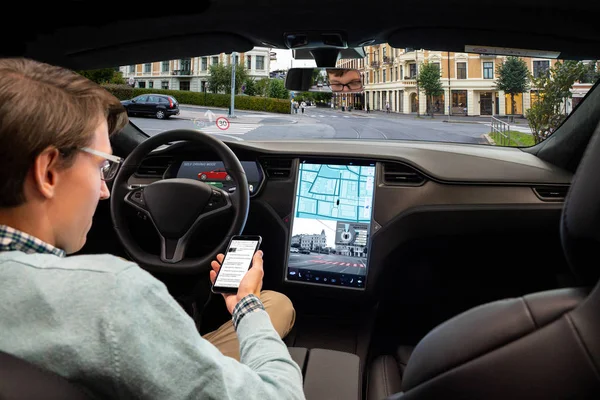In 2024, urban mobility is undergoing a paradigm shift, powered by the twin forces of AI and electric vehicle (EV) fleets. According to a recent report by Bloomberg Green, the global electric vehicle market is expected to reach over 40 million units by the end of the year, a staggering leap driven by technological advancements. The main keyword, “EV fleets,” is at the heart of this transformation, enabling cities to become cleaner, more efficient, and smarter. This article explores how AI and EV fleets are revolutionizing urban mobility, offering insights into the technologies driving this change and practical tips for consumers and city planners alike.
The Role of AI in Transforming EV Fleets
AI-Driven Fleet Management
Artificial Intelligence is no longer a futuristic concept; it’s a reality that’s reshaping how EV fleets operate. Fleet management systems powered by AI are optimizing routes, reducing energy consumption, and cutting operational costs. Companies like Rivian and Hyundai are leveraging AI to monitor vehicle health, predict maintenance needs, and ensure optimal battery performance.
- Predictive Maintenance: AI algorithms analyze data to predict when parts will need replacement, minimizing downtime and enhancing fleet reliability.
- Route Optimization: By using real-time traffic data, AI optimizes delivery routes, reducing energy use and improving efficiency.
Autonomous Driving and Safety
AI is also at the forefront of autonomous driving technology. Brands like Tesla and Nissan are pioneering self-driving capabilities that promise safer, more efficient urban travel. According to MIT Technology Review, autonomous vehicles could reduce traffic accidents by up to 90%, a game-changer for urban safety.
- Enhanced Safety Features: AI systems in EVs continuously learn from the environment, improving their ability to navigate complex urban landscapes.
- Regulatory and Ethical Considerations: As autonomous EVs become more common, cities need to address regulatory challenges and ethical concerns, such as data privacy and liability in accidents.
EV Fleets: Paving the Way for Sustainable Cities
Environmental Impact and Sustainability
With climate change at the forefront of global challenges, EV fleets offer a sustainable solution for urban transport. According to the International Energy Agency (IEA), EVs emit 50% less carbon dioxide than their internal combustion counterparts over their lifetime.
- Reduced Emissions: EV fleets are reducing urban air pollution, contributing to better public health and a lower carbon footprint.
- Renewable Energy Integration: Many cities are integrating renewable energy sources like solar and wind to power EV charging stations, further enhancing sustainability.
Charging Infrastructure: Challenges and Solutions
As EV adoption increases, so does the demand for robust charging infrastructure. CleanTechnica reports that there are over 1.5 million public charging points worldwide, yet many cities still face challenges in meeting demand.
- Fast-Charging Networks: Companies like BYD and Volkswagen are expanding fast-charging networks to reduce charging time and enhance convenience.
- Innovative Solutions: Wireless charging and battery swapping are emerging as innovative solutions to improve the EV charging experience.
Practical Tips for Adopting EV Fleets
How to Choose the Right EV Fleet
When considering an EV fleet for urban use, it’s crucial to evaluate various factors to ensure you make the right choice.
- Assess Fleet Needs: Determine the size of the fleet required and the specific functions it will serve.
- Evaluate Range and Performance: Choose EVs with adequate range and performance capabilities for your city’s needs.
- Consider Total Cost of Ownership: Factor in purchase price, maintenance, and energy costs.
Where to Buy and What to Compare
Several manufacturers offer a wide range of EV models, each with unique features tailored to different needs. Some top brands and models include:
- Tesla Model 3: Known for its long range and advanced technology.
- Ford Mustang Mach-E: Offers a blend of performance and practicality.
- Nissan Ariya: Ideal for those seeking a balance between affordability and features.
Conclusion: The Future of Urban Mobility
The integration of AI and EV fleets is not just transforming urban mobility; it’s pioneering a new era of sustainable, intelligent cities. As we look to the future, the potential for even more advanced technologies—like vehicle-to-grid systems and fully autonomous transport networks—holds promise for cleaner, more efficient urban living.
As a reader, what are your thoughts on the impact of AI and EV fleets on your city? Share your views in the comments below. Together, we’re stepping into a future where technology and sustainability create harmonious urban environments. Stay tuned to see how these trends will continue to evolve and revolutionize our daily lives in the years to come.

